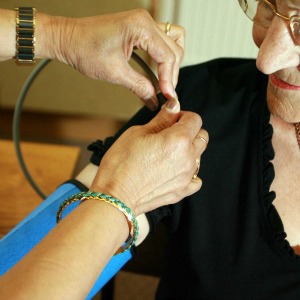NICE’s proposal to introduce a ‘bundled’ QOF indicator in diabetes next year is ‘unnecessary and misguided’, the GPC has warned.
Dr Andrew Green, chair of the GPC’s clinical and prescribing subcommittee, told Pulse the indicator – announced in a consultation document this week – would penalise GPs striving to do the best for their patients, particularly those working in the most deprived areas.
Dr Green said he would be responding on behalf of the GPC and would argue that the ‘all-or-nothing’ indicator would hit practices with large numbers of disadvantaged patients known to be difficult to reach for regular check-ups.
The bundled indicator would see GPs having to carry out eight annual process checks in each patient with diabetes in order to achieve any points, including three annual checks for which indicators were only recently removed from the QOF, namely weight, urinary albumin-to-creatinine ratio and serum creatinine/eGFR measurements.
Related articles
GPs face tougher diabetes targets as NICE puts ‘bundled’ QOF indicator out for consultation
Revealed: DH plans to bundle diabetes QOF indicators worth over £5,000
NICE is currently piloting the indicator, which it developed following pressure from the Department of Health to come up with a QOF incentive that could address wide variation in completion of annual checks identified in the National Diabetes Audit (NDA), which suggested only half of patients receive all the checks every year in some areas.
Ministers backed the idea, despite a Government-commissioned review by RCGP revalidation lead Professor Nigel Sparrow concluding that disparities between QOF performance results and the NDA were due to differing coding and measurement methods.
In a statement to GPs about the new consultation, the GPC said it would be ‘keeping up the pressure’ to reduce bureaucracy in the QOF.
Dr Green told Pulse the proposed bundled indicator went against moves this year to reduce the ‘tick-box’ element of the framework.
He said: ‘The Government’s own report by Professor Sparrow showed that [the disparity with the NDA] was due to statistical differences, and they were looking at different populations. We don’t believe there is a problem to be solved and even if there were this would not be the way to solve it.’
He added: ‘To penalise practices for doing their best for their patients is quite wrong. Whatever the intention of this, the effect will be that practices will have less resource to deal with diabetic care – and the practices that will lose most will be those that have the most difficult-to-reach patients.’
The NICE consultation on the proposed diabetes indicator and other new indicators for 2015/2016 closes on Monday 3 February.
Pulse October survey
Take our July 2025 survey to potentially win £1.000 worth of tokens





 Oviva’s fully remote Tier 3 Weight Management programme
Oviva’s fully remote Tier 3 Weight Management programme






